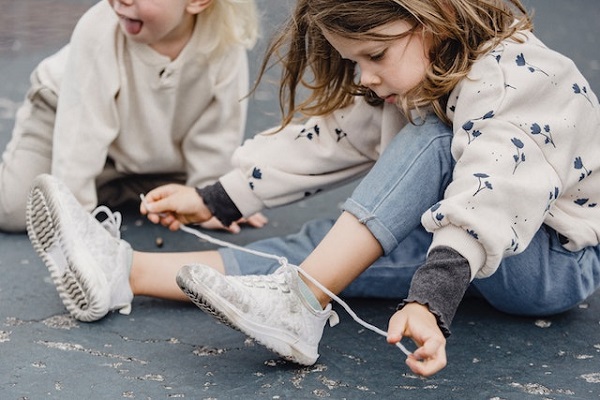Words: Mukesh SHARMA
When your child is born, their feet are customarily composed of soft and flexible cartilage. As your child grows up, the cartilage gradually turns to bone — this is called ossification. It is during this time that the feet are at particular risk — more so, from injury due to increased stress and strain from activities, such as sports, other outdoor games, dancing, among others.
There is also a possibility that certain problems could be genetic. Flat foot, for example, is one of the most common foot conditions; it affects 40-45 per cent of pre-school children. It is not a concern, usually. However, some children with flat feet may have a tendency to over-pronate; in other words, roll their ankle inwards, especially while running, jogging, and playing sports.
- Bow legs. Most children, by age two, have a small gap between their knees and ankles, when they stand. When this gap is marked, or does not correct itself, it is imperative to check with a doctor. Remember — this could be a sign of rickets [a skeletal disorder], albeit the condition is usually uncommon.
- Knock knees. This is obvious when the child stands with their knees together; besides, there is often a perceptible gap between their ankles. From age two to four a gap of up to 6cm [2.5 inches] is ‘weighed up’ as normal. Knock knees get corrected on their own by age six.
- In-toeing. This is also called pigeon-toes — when a child’s feet ‘turn in,’ so to speak. It usually corrects itself by age eight; treatment is usually not required.
- Out-toeing. This occurs when the feet point outwards. This is usually a self-correcting condition.
- Flat feet. If your child tends to have flat feet, there’s no need to be unduly concerned. When the arch forms, just as your child stands ‘tiptoe,’ there is, again, no need to taking treatment too.
- Tiptoe walking. When your child walks far too much on tiptoe, it is best to speak to a doctor.
Risk Factors
Observe your child’s walking patterns. Do they turn their feet, in or out? Check their shoes. Are they disposed to wearing them out more on one side? If yes, please speak to your family physician, or specialist [orthopaedician], or foot-care specialist [podiatrist]. They will assess your child’s feet and gait with the use of a detailed examination that may also include gait analysis and computer-aided scans.
Things To Do
- Avoid activities that cause feet pain to your kid
- Encourage foot-stretching and foot-strengthening exercises
- Use orthotic insoles
- Keep a watch on your kid and consult a doctor — if you find there is something not okay with their feet
Choosing First Shoes & Socks
- The feet for children, under age five, grow fast; so, it is important to making sure that the bones grow straight
- The toe bones are soft at birth. If they’re hampered by tight shoes, or socks, they can’t straighten out and grow properly
- A kid may not need proper shoes until they’re walking on their own. What’s more, shoes can be kept for outside use only, to begin with. Make sure that the shoes and socks are of the right fit and size
- Shoes with laces, buckle, or Velcro, are good — they hold the heel in place and stop the foot from slipping and/or damaging the toes. If the heel slips off, when your child stands on tiptoe, you’d think that the shoes are too big
- Always opt for shoes made from natural materials, viz., leather, cotton, or canvas. They allow air to circulate. Plastic shoes are a big ‘no;’ they make the feet sweaty. Not only that; they can cause friction [rub] and trigger fungal infections
- Cotton socks are best for kids’ use; not synthetic/polyester socks.


I am French, but I had the good opportunity to meeting Mukesh Sharma, many times in India, during my career in the shoe industry. I can only recommend that all parents follow Mukesh’s advice. Mukesh is a good technician, but, above all, he is a great philanthropist. Your children will thank you for it!
Yes, indeed. This is very interesting, also expert, information on every baby’s growing feet; of ‘what to wear’ and ‘what not to.’ It is recommended reading for all parents.
Very informative and helpful article. I have known Mukesh for a number of years. His knowledge in the area of footwear is unparalleled. The fact also is: I have personally benefited from his advice many times.